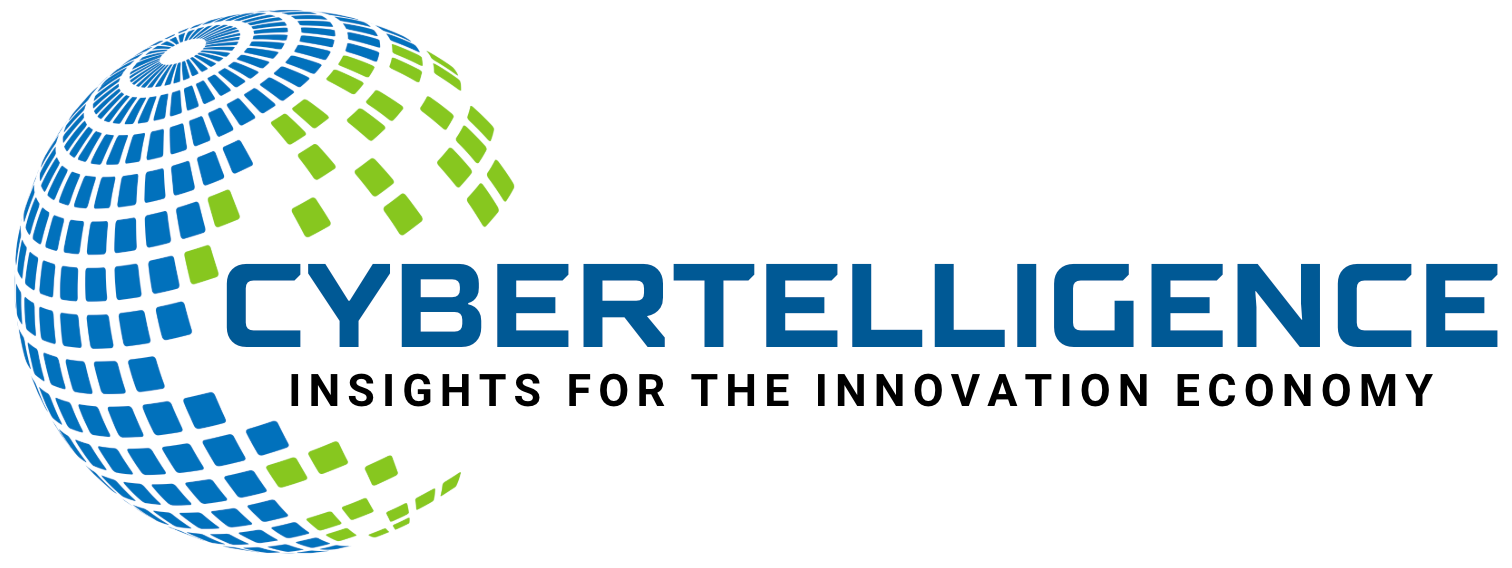OpenAI’s Open Model Delayed Again Amid Rising Competition and New Developments
In the fast-paced world of artificial intelligence, staying updated on the latest AI trends is crucial. Recent news highlights significant…
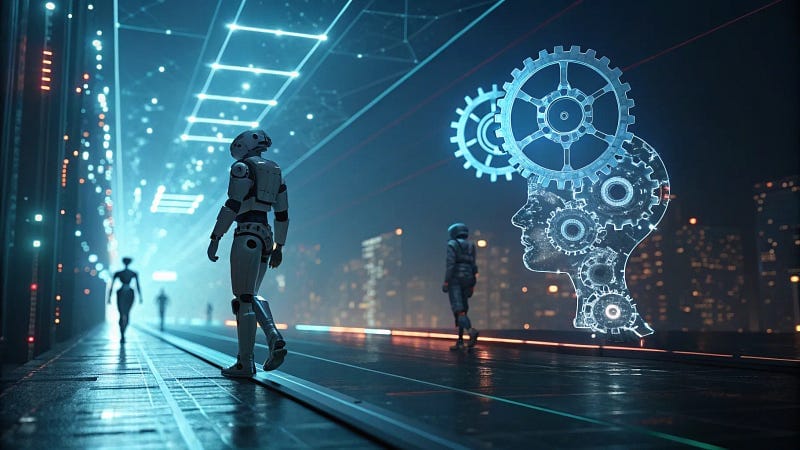
In the fast-paced world of artificial intelligence, staying updated on the latest AI trends is crucial. Recent news highlights significant shifts — from OpenAI’s latest open model delay to exciting breakthroughs in embodied AI and strategic talent acquisitions by major tech players. Let’s dive into these developments and explore what they mean for the AI landscape.
Table of Contents
- OpenAI’s Open Model Delay: Safety and Quality Take Priority
- Embodied AI: Hugging Face’s Reachy Mini Robot Sparks Enthusiasm
- Meta’s Voice AI Ambitions: Acquiring Play.ai
- Conclusion: Navigating the Latest AI Trends
- Frequently Asked Questions (FAQ)
OpenAI’s Open Model Delay: Safety and Quality Take Priority
For enthusiasts eagerly awaiting OpenAI’s open weights model, the latest update is a mixed bag. OpenAI has announced another delay in the release of this highly anticipated model after identifying critical issues that require additional safety testing and thorough review of high-risk areas.
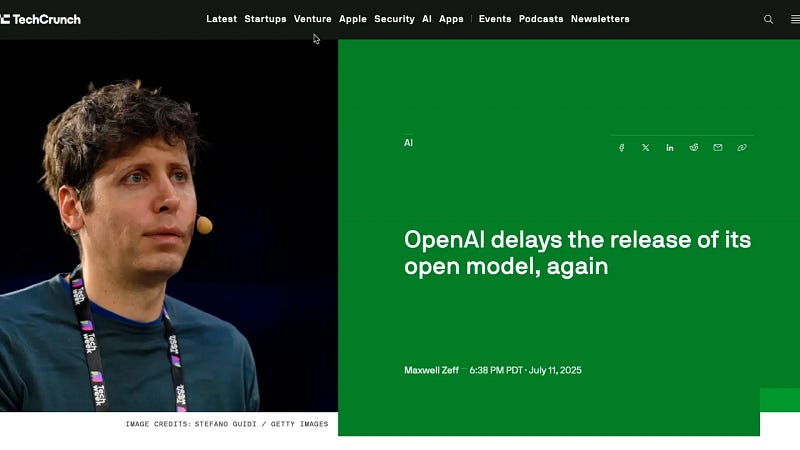
Back in June, Sam Altman had initially set expectations for a summer release, noting on Twitter that their research team had achieved something “unexpected and quite amazing,” which would be worth the wait. However, despite approaching the launch, Altman recently tweeted that the release would be postponed indefinitely to ensure the model meets their high safety standards. He emphasized that once open weights are released, they cannot be retracted, and OpenAI is committed to getting it right the first time.
“We need time to run additional safety tests and review high risk areas… Once weights are out, they can’t be pulled back. This is new for us, and we wanna get it right.” — Sam Altman
OpenAI researcher Aidan Clark further clarified that while the model’s capabilities are phenomenal, the bar for open-source models is set very high. He stated, “This one can’t be deprecated,” highlighting the permanent nature of releasing open weights and the responsibility that comes with it.

Speculation on the Delay: Alignment or Competition?
While many accepted the safety and quality explanation, speculation arose about other potential causes. Some insiders hinted that the delay might be connected to the emergence of a new, powerful open model from China called Kimi K2, developed by Moonshot AI.
Kimi K2 has been making waves by outperforming OpenAI’s models on several benchmarks. For example, on coding benchmarks, Kimi K2 scored better than GPT-4.1 and was only narrowly behind Cloud 4 Opus. On the AIME 2025 math benchmark, it surpassed GPT-4.1, Cloud 4 Opus, and Gemini 2.5 Flash.

Users have praised Kimi K2 for its advanced capabilities in tool calling and agentic loops, allowing it to manage multiple tools simultaneously and know precisely when to stop — features critical for reliable production use. Pietro Serrano remarked that Kimi K2 is the first model he feels comfortable using in production since Claude 3.5 SONNET.
“Kimi K2 is so good at tool calling and agentic loops… It’s the first model I feel comfortable using in production since Claude 3.5 SONNET.” — Pietro Serrano
Manlos Didi Das added that Kimi K2 is having its “mini deep seek moment,” ranking 14th on OpenRouter ahead of Grok 4 and GPT 4.1, excelling particularly in emotional intelligence (EQ) and creative writing benchmarks.
Kimi K2 employs a mixture of experts architecture, similar to DeepSeq v3, scaling to a trillion total parameters. Despite these impressive specs, credible insiders like Yu Chen Jin have downplayed the rumors that OpenAI delayed its model specifically because of Kimi K2. Instead, they suggest OpenAI’s model is smaller but encountered an unspecified, significant issue just before release, possibly necessitating a retrain.
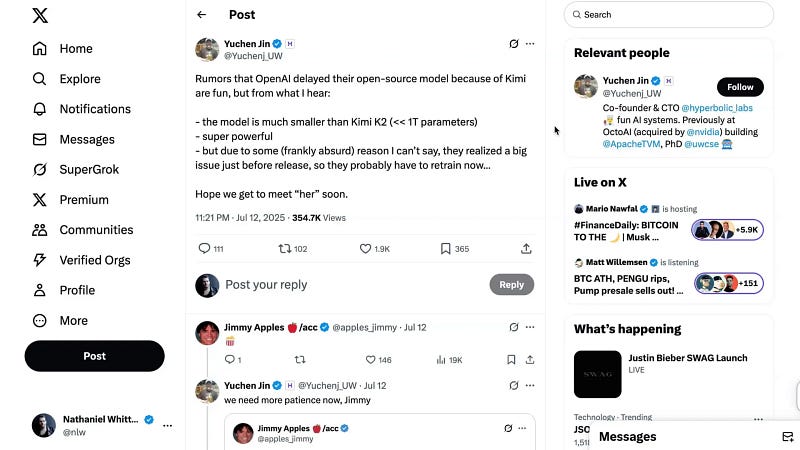
Embodied AI: Hugging Face’s Reachy Mini Robot Sparks Enthusiasm
Switching gears to embodied AI, Hugging Face has made a surprising splash with its open source robot, the Reachy Mini. After unveiling two models in May — a desktop-sized Reachy Mini and a full-sized humanoid — Hugging Face began taking preorders for the smaller variant, raking in over half a million dollars in just one day.
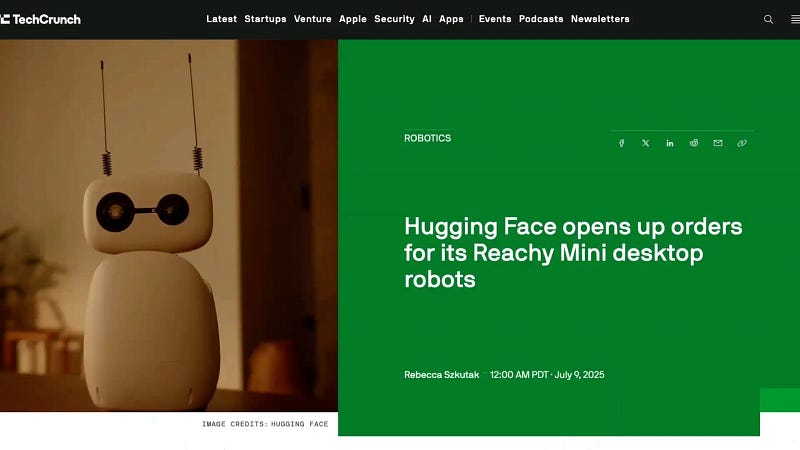
The Reachy Mini is about the size of a teddy bear and equipped with microphones, speakers, and cameras, but it lacks limbs. It serves primarily as a platform for prototyping interactive AI experiences. Most demos show it moving its head to a beat, which, while simple, has been described as captivating. TechCrunch even called it the “Seinfeld of AI hardware” — bots that might not do much but remain endlessly engaging.
We believe this marks just the beginning of the embodied AI and robotics era. A developer-focused prototype like Reachy Mini seems well-positioned to gain traction among enthusiasts and tinkerers eager to experiment with interactive AI hardware.
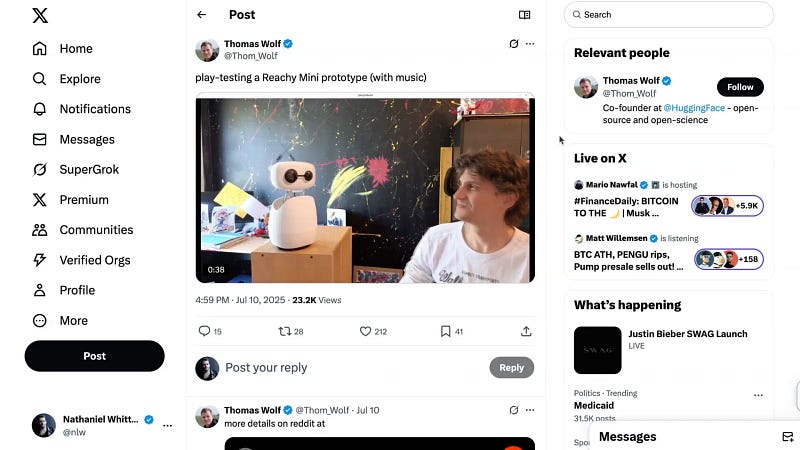
Meta’s Voice AI Ambitions: Acquiring Play.ai
In another major AI trend, Meta continues expanding its AI talent pool by acquiring Play.ai, a voice technology startup formerly known as PlayHT. Bloomberg reports that the deal, completed at an undisclosed valuation, is an acquihire focused entirely on bringing the Play.ai team into Meta’s fold.
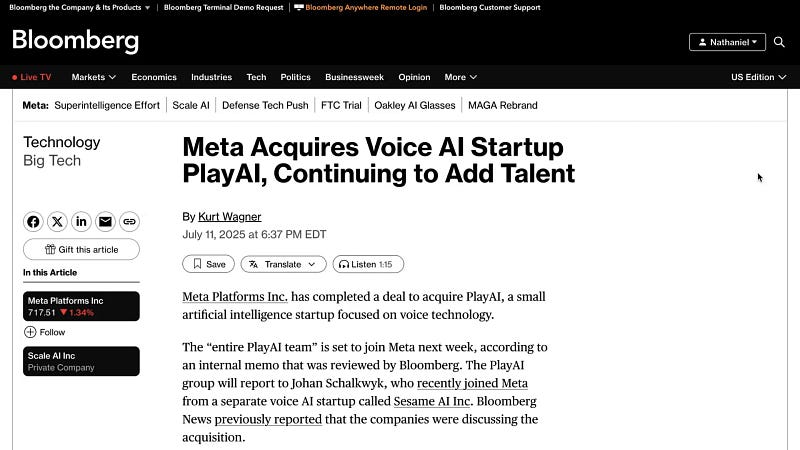
This move underscores Meta’s commitment to voice technologies as a key component of its AI roadmap. Play.ai specializes in creating natural, life-like AI voices with realistic pauses and vocal ticks, making synthetic speech sound less robotic. The team will join Meta’s superintelligence division under Johan Shrawick, who previously led machine learning at Sesame AI, a company known for breakthroughs in naturalistic AI voice generation.
“Play.ai’s work in creating natural voices along with a platform for easy voice creation is a great match for our work and roadmap across AI characters, Meta AI, wearables, and audio content creation.” — Internal Meta memo
As Meta continues building out its AI capabilities, voice will likely play a central role in enhancing user experiences across multiple platforms and devices.
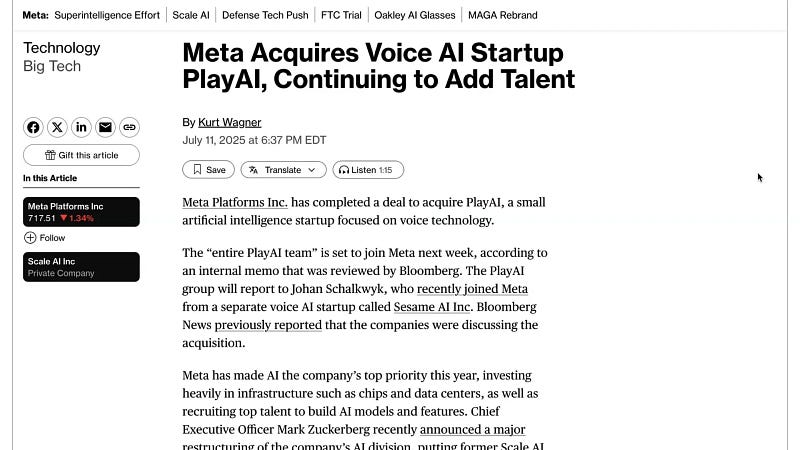
Conclusion: Navigating the Latest AI Trends
From OpenAI’s cautious approach in releasing its open model to the rising competition posed by China’s Kimi K2, the AI landscape remains dynamic and competitive. Meanwhile, embodied AI is gaining momentum with accessible hardware like Hugging Face’s Reachy Mini, and Meta’s strategic hires indicate a strong focus on voice technologies powering future AI interactions.
These developments underscore the importance of balancing innovation with safety and quality, as well as the growing convergence of AI software and hardware. Staying informed about these AI trends helps us anticipate where the technology is headed and how it might impact industries and everyday life.
Frequently Asked Questions (FAQ)
Why has OpenAI delayed its open weights model release?
OpenAI delayed the release to conduct additional safety tests and review high-risk areas. They want to ensure the model meets very high safety and quality standards before making it publicly available, as open weights cannot be retracted once released.
Is the delay related to competition from other AI models?
While rumors link the delay to competition from China’s Kimi K2 model, credible insiders suggest the delay is due to a significant issue discovered just before release. The OpenAI model is reportedly smaller and independent of Kimi K2’s performance.
What is special about Hugging Face’s Reachy Mini robot?
Reachy Mini is a small, open source robot designed for prototyping interactive AI experiences. Despite its simple movements, it has captivated the developer and tinkerer communities, marking an early step in embodied AI hardware.
What does Meta’s acquisition of Play.ai signify?
Meta’s acquisition of Play.ai highlights its focus on advancing natural voice AI technology. The Play.ai team will contribute to Meta’s superintelligence division, enhancing voice synthesis capabilities for AI characters, wearables, and audio content creation.
This article is based on comprehensive research derived in part from the referenced video OpenAI’s Open Model Delayed Again
